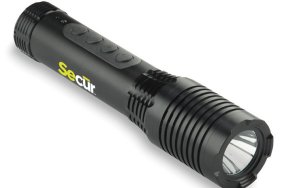 Even with the popularity of headlamps, the majority—if not all—of outdoorsmen still keep a flashlight or two on hand when they camp. When it comes to flashlights, most will simply grab one that looks sturdy, or doesn’t cost a lot. However, with advancements in technology and design, flashlights offer more than they used to. Today we’ll take a look at a few of the terms associated with flashlights, in order to help shoppers have a better idea of what they’re buying for the trail.
Even with the popularity of headlamps, the majority—if not all—of outdoorsmen still keep a flashlight or two on hand when they camp. When it comes to flashlights, most will simply grab one that looks sturdy, or doesn’t cost a lot. However, with advancements in technology and design, flashlights offer more than they used to. Today we’ll take a look at a few of the terms associated with flashlights, in order to help shoppers have a better idea of what they’re buying for the trail.
LED (Light-Emitting Diode)
Perhaps the most popular bulb type on the market, LED bulbs are energy efficiency, have a long run time, are impact resistance, and can offer a variety of brightness settings.
Light Output/Lumens
This is the measure of the light intensity coming from a flashlight on the highest brightness setting powered by new batteries. On applicable models, it may also be shown for multiple light settings. Light output can range from 20 lumens, which is ideal for reading a book, to an intense 3500-lumens.
Run Time
Run time is typically measured in hours and indicates how long it takes the light’s output to drop to 10% of the rated output when used with new batteries. Your flashlight’s output may gradually decrease over time, or remain largely constant and then suddenly decrease; it varies between models. Run time is also typically given for each light setting.
Beam Distance
Measured in meters, beam distance indicates how far the light will shine before the brightness diminishes. This distance will vary, depending on the brightness setting you’ve selected.
Impact Resistance
Flashlights designed for outdoor use will often be labeled with their impact resistance, which is determined before public release by dropping them six times onto concrete at the rated distance.
Water Resistance
Splash and submersion ratings are offered on flashlights that are built to withstand a bit of rain, or an unplanned dunk in a puddle, using an IPX rating system. A rating of IPX4 means your light is splash resistant from all angles. IPX7 indicates a rating of temporary immersion, typically up to half an hour at three feet or so. An IPX8 rating means it can be submerged up to four hours at a specified depth.
Beam
There are typically three types of beams: flood (fixed), spot (focused), and adjustable. Flood beams offer a single width and are good for everyday use or in your campsite, spot beams are condensed to stretch across longer distances, and a light with an adjustable beam offers both, as well as variations in between.








